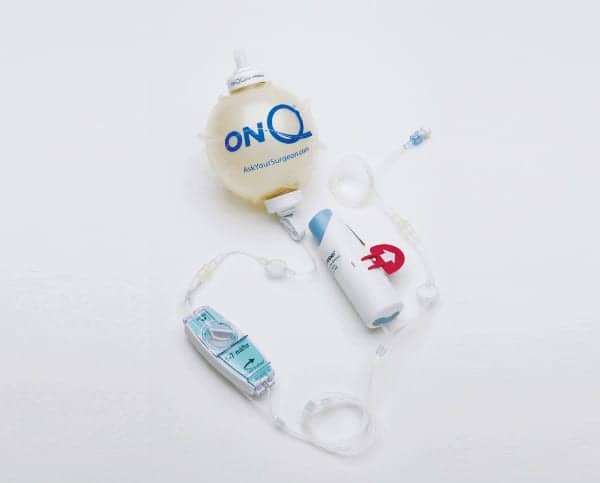
I-Flow’s non-narcotic ON-Q Pain Relief System slowly infuses local anesthetic near a nerve for effective pain relief.
Staying ahead of pain with local nerve blocks can help patients avoid narcotics and heavy general anesthesia, and this is where and how the ON-Q pain pump shines, says Kamakashi Zeidler, MD, a plastic surgeon in San Jose, Calif.
This paravertebral pain catheter nerve block delivers local anesthetic to surgical sites continuously for several days. “I describe it to my patients as being similar to the idea of an epidural for your breast,” she says. “Before surgery, the anesthesiologist performs a paravertebral block, and under ultrasound guidance places a paravertebral catheter. This is connected to an ON-Q pain pump with a 3-day reservoir and an adjustable flow rate that can be dialed up and down after surgery for patient comfort,“ she says. “Across the board, my patients state that the postsurgical pain is nowhere near what they had expected. Because the paravertebral block is in effect during the entire surgical procedure, less general anesthetic is required and there are added benefits of less postoperative nausea and vomiting.”
“I describe it to my patients as being similar to the idea of an epidural for your breast.” —Kamakashi Zeidler, MD
Zeidler uses these blocks again during the second-stage operation where tissue expanders are exchanged for implants or flaps are revised. “These ON-Q pain pumps are also useful in autologous reconstruction, where they can be placed in the abdomen in the transversus abdominus plane for a TAP block,” she explains. “My abdominally based free flap patients have enjoyed easy recoveries from these large operations and have been able to ambulate easily the day after surgery.”


